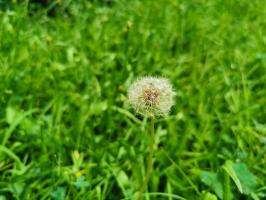How to Propagate a Rubber Tree Plant
Rubber tree plants, also known as Ficus elastica, are popular houseplants due to their attractive foliage and ease of care. If you want to expand your collection or share your plant with a friend, propagating a rubber tree plant is a great option. In this article, we'll explore the steps you need to take to successfully propagate a rubber tree plant.
What Is Propagation?
Propagation is the term used when referring to the process of growing new plants from existing ones. In the case of rubber tree plants, the two most common methods of propagation are through stem cuttings or air layering.
Method 1: Propagating With Stem Cuttings
Stem cuttings involve taking a piece of stem from a rubber tree plant and growing it into a new plant. To propagate a rubber tree plant with stem cuttings, follow these steps:
Step 1: Choose a Healthy Stem
Select a stem from your rubber tree plant that is at least 6 inches long and has a few leaves growing from it.
Step 2: Prepare the Cutting
Using a clean, sharp pair of pruning shears, make a clean cut just below the lowest leaf on your stem cutting.
Step 3: Remove Lower Leaves
Remove the lower leaves from the stem cutting, leaving only a couple of leaves at the top.
Step 4: Plant the Cutting
Dip the cut end of your stem cutting in rooting hormone powder and plant it in a small pot filled with moist potting soil.
Step 5: Water and Care
Water your new plant regularly and place it in a well-lit area, but away from direct sunlight. With proper care, your new rubber tree plant should start to grow new leaves within a few weeks.
Method 2: Propagating With Air Layering
Air layering is a technique that encourages roots to grow on the stem of a plant, allowing you to create a new plant with minimal disturbance to the parent plant. To propagate a rubber tree plant using air layering, here's what you need to do:
Step 1: Choose a Stem
Select an appropriate branch or stem from your rubber tree plant that is at least 1 inch in diameter.
Step 2: Prepare the Stem
Make a small, half-inch cut in the middle of the stem, just below a node. Then, wrap the cut area with damp sphagnum moss and secure it in place with plastic wrap.
Step 3: Check for Roots
Check regularly to see if roots have formed within the moss. This process can take several weeks or even a few months to complete.
Step 4: Remove and Plant
Once you see roots growing within the moss, you can cut the stem just below the moss and plant it in a pot filled with moist potting soil.
Step 5: Care for Your New Plant
Water your new rubber tree plant regularly and place it in a well-lit area, but away from direct sunlight. With proper care, your new plant should thrive and start to grow new leaves.
In Conclusion
Propagating your rubber tree plant is a fun and rewarding way to expand your collection or share your love of plants with others. Whether you choose to use stem cuttings or air layering, following these easy steps will ensure your success in propagating a new rubber tree plant. With a little patience and care, your new plant will grow and thrive, adding beauty and healthy foliage to your home for years to come.

 how many times do yo...
how many times do yo... how many planted tre...
how many planted tre... how many pine trees ...
how many pine trees ... how many pecan trees...
how many pecan trees... how many plants comp...
how many plants comp... how many plants can ...
how many plants can ... how many plants and ...
how many plants and ... how many pepper plan...
how many pepper plan...
































